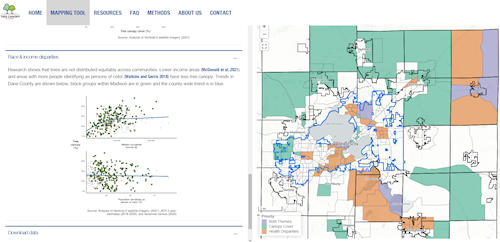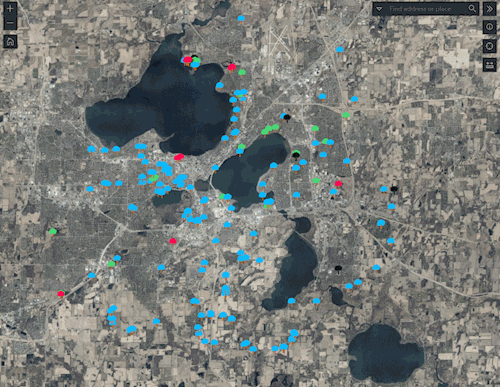

Growing Shade is an equitable tree cover prioritzation tool created by CARPC.This tool makes it easy for local planning staff members, neighborhood groups and residents to figure out where planting new trees will have the most impact. Users can explore this tool, which combines demographic, environmental, public health, and socioeconomic data to illustrate how tree canopy cover differs across Dane County and how it has changed over time.

The Dane County Tree Board in collaboration with the State Cartography Office and the Capital Area Regional Planning Commission have begun the process of updating the Heritage Oak Trees to create a 2022 inventory.
Heritage trees were originally inventories in 1976, in 2001 the Dane County Tree Board revisited the trees and added coordinates to the locations. All Heritage Oak's are estimated to be 200 years old or older. White or bur oaks needed a trunk circumference measured at 4.5 feet above ground level of at least 10 feet, and pin, black, and red oaks needed a trunk circumference of 11 feet.